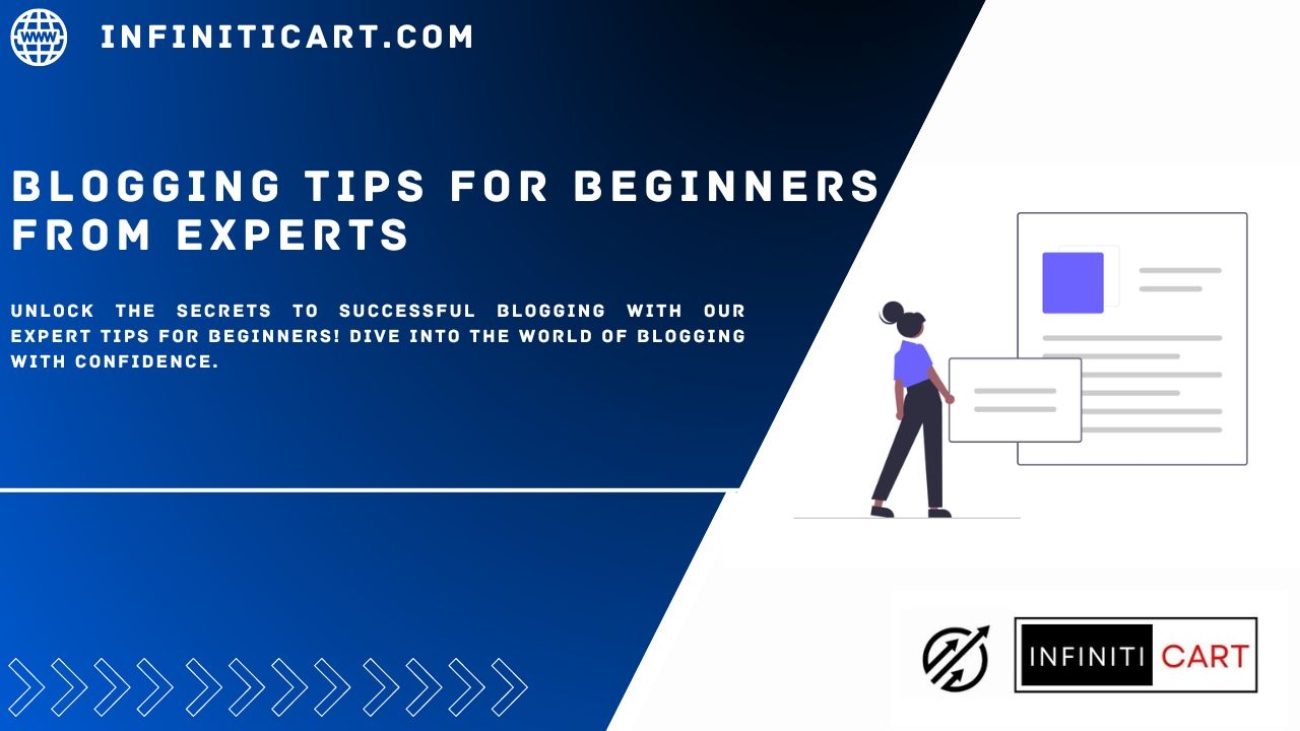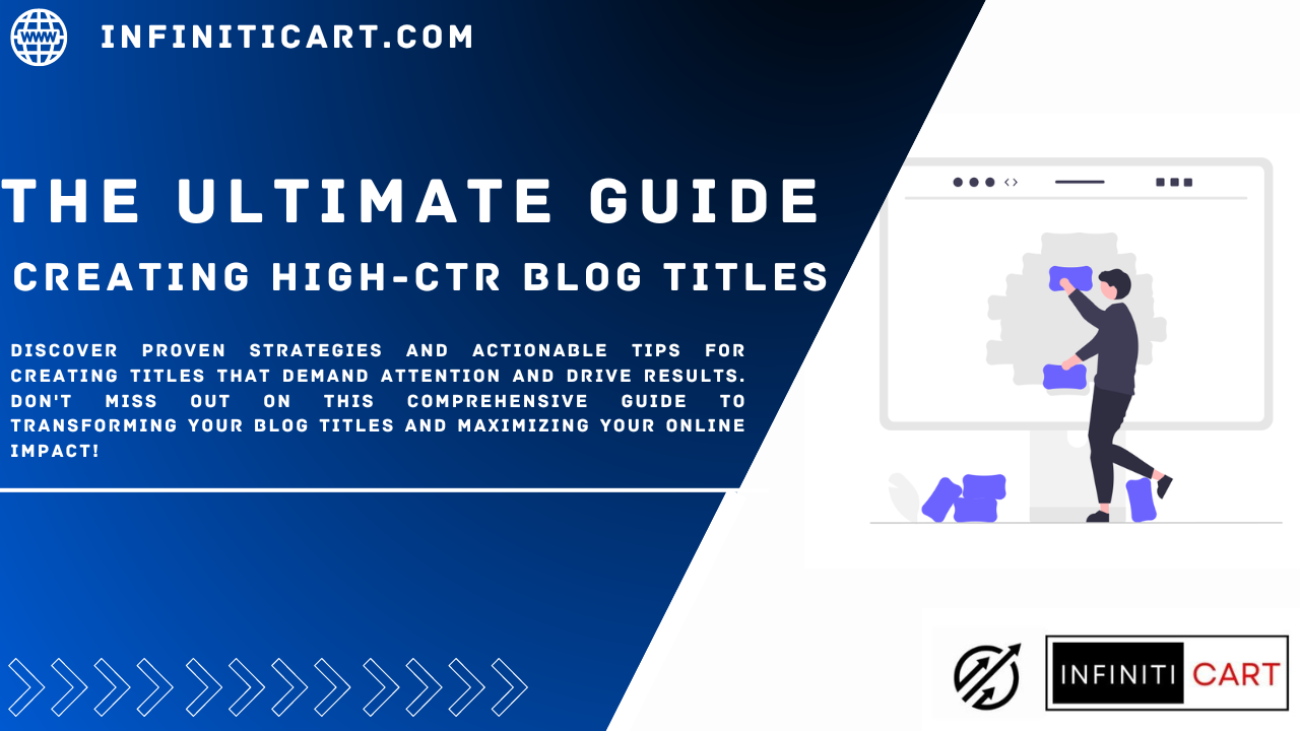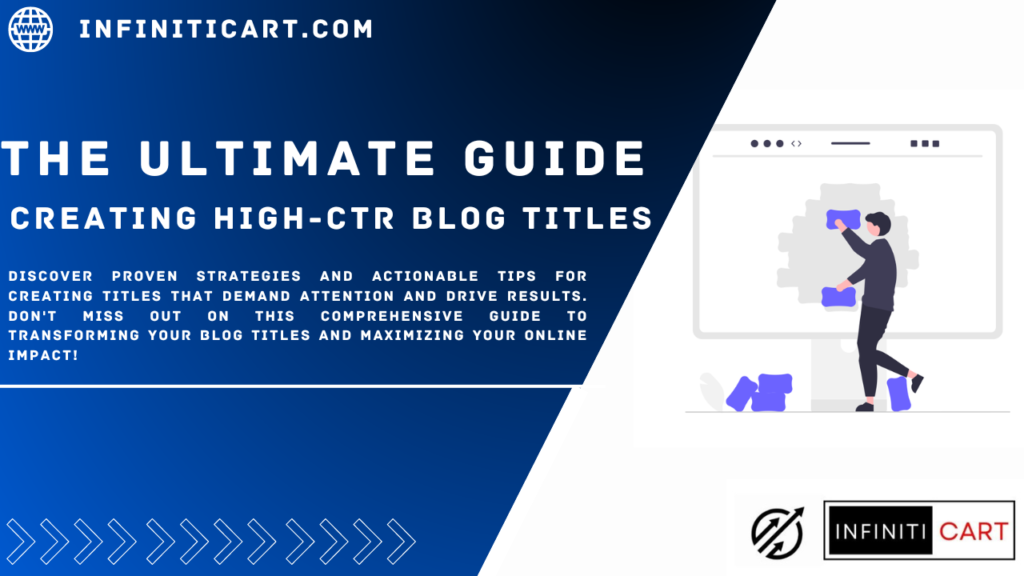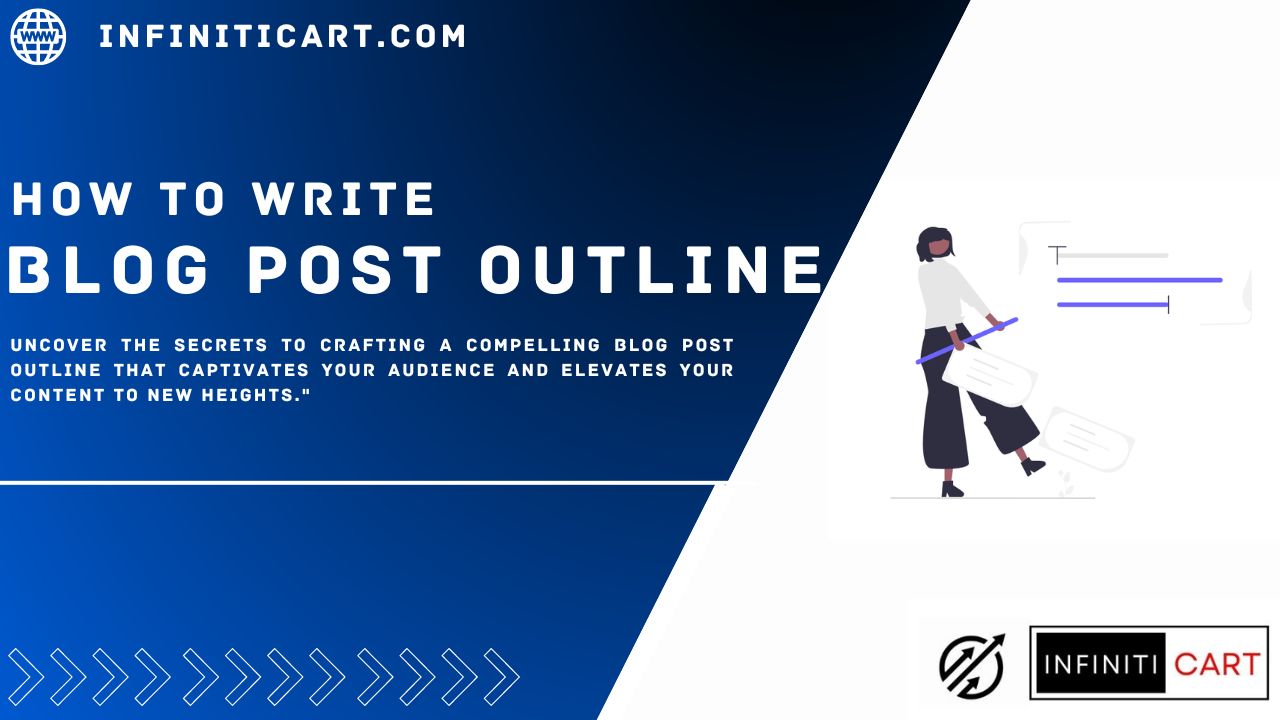
I have a question for you!!
Have you ever wondered how some bloggers effortlessly captivate their audience and skyrocket their blog’s success?
Well, I certainly have, and today, I’m here to share with you the secret sauce that will take your blogging game to the next level.
In today’s digital world, blogging has become more than just a hobby or a way to share your thoughts.
It has transformed into a powerful tool that individuals and businesses alike can use to make their mark and reach a wider audience.
But with the vast sea of blogs out there, how can you stand out from the crowd and make your voice heard?
That’s where the magic lies—in the power of expert tips.
Imagine having access to a treasure trove of insider knowledge, strategies, and techniques that will set you apart from the rest.
Imagine yourself unleashing this power, armed with the tools to create compelling content, engage your readers, and ultimately achieve your blogging goals.
By the end of this article, you’ll gain a deep understanding of how to harness the power of expert tips to boost your blogging game.
I’ll guide you through practical advice, step-by-step processes, and real-life examples that will leave you feeling inspired and ready to take action.
So, if you’re ready to unlock your full potential as a blogger, stay tuned.
Together, we’ll delve into the art of captivating storytelling, optimizing your blog for maximum visibility, and building a loyal community that hangs onto your every word.
Get ready to transform your blog into a powerhouse of influence and watch as your readership soars.
Let’s dive in and unleash the power of expert tips to skyrocket your blogging success!
Understanding the Basics of Blogging
In today’s fast-paced digital era, the heartbeat of the online world pulsates with the rhythm of countless blogs.
With every beat, a new perspective is shared, a new story is told, and a new connection is made.
Yet, to truly appreciate the art of blogging, we must delve into its roots.
Definition of Blogging and its Evolution Over Time
Blogging, in its simplest form, is a method of communicating and sharing information on the internet.
The term “blog” was originally derived from “weblog,” an online diary where individuals could share their personal experiences, thoughts, and ideas.
However, blogging has evolved dramatically over the years, just like the constantly morphing online landscape it resides in.
From personal diaries, blogs have burgeoned into a powerful tool for businesses, media outlets, and even governments.
They’ve become the lifeblood of online content, a pulse in the digital world that signals the present moment’s vibrancy and energy.
Different Types of Blogs and Their Purposes
Blogs today are as diverse as the people behind them.
There are personal blogs where individuals share their life experiences and passions.
Business blogs, on the other hand, provide valuable industry insights and thought leadership.
Then, there are niche blogs that focus on specific topics like food, travel, or fashion.
Each type of blog serves a unique purpose.
Personal blogs resonate with authenticity, connecting people through shared experiences.
Business blogs foster credibility and trust, positioning companies as industry leaders.
Niche blogs cater to specific interests, creating communities of like-minded individuals.
Key Elements of a Successful Blog Post
A successful blog post isn’t just a random collection of words thrown onto a webpage.
It’s a carefully crafted narrative that tells a story, shares an idea, or provides valuable information.
The key elements of a successful blog post include a captivating headline, an engaging introduction, structured content, and a compelling conclusion.
It should be written in an active voice that keeps the narrative moving forward and uses transitional words for fluidity.
Above all, a successful blog post is one that resonates with the reader.
It captures the pulse of the moment, reflects current trends, and speaks with a genuinely human voice.
This is the essence of blogging: a reflection of our world, captured in words and shared with a global audience.
In this digital age, blogging is more than just writing. It’s about connecting, sharing, and creating a space where voices can be heard.

1. Finding Your Blogging Niche: A Pathway to Authentic Expression
The key to creating a resonating and impactful blog lies in discovering your unique niche.
It’s a journey of identifying your passion, understanding market trends, and aligning with your target audience’s interests.
Identifying Your Passion and Expertise
The most compelling blogs are those that brim with genuine passion and expertise.
It’s not just about writing; it’s about articulating your thoughts in a way that strikes a chord with your readers.
Start by asking yourself, ‘What ignites my passion?‘ Perhaps it’s photography, technology, fashion, or health.
Your passion is the driving force behind your blog, the wellspring from which originality and authenticity flow.
Next, consider your areas of expertise. What unique insights can you offer to your readers?
Your expertise is the compass that guides your blog content, shaping it into a reliable source of information.
When passion and expertise intersect, magic happens. Your blog becomes a beacon that lights up the blogosphere.
Researching Popular Blogging Niches and Trends
While passion is crucial, it’s also essential to keep your finger on the pulse of current trends.
Delve into the popular blogging niches, analyze the content that’s making waves, and identify the trends that are capturing attention.
This research is your roadmap, illuminating the path that leads to a broader readership.
Yet, remember that trends are transient.
They ebb and flow with the changing tides of public interest.
Therefore, while being up-to-date is important, it’s equally vital to maintain your unique voice amidst the clamor of trends.
Choosing a Niche that Aligns with Your Interests and Target Audience
Finally, it’s time to align your interests with your target audience’s preferences.
This alignment is the bridge that connects you with your readers. Understand their needs, interests, and desires.
After all, your blog is not just a platform for self-expression but also a medium to engage and converse with your audience.
So, in this vibrant dance of blogging, take the lead with your passion, let the rhythm of trends guide your steps, and choose the stage that resonates with your audience.
This is the key to finding your unique blogging niche – a niche that not only reflects your identity but also strikes a chord with the world.
2. Setting Up Your Blog for Success
In our current digitally-dominated world, establishing a compelling presence on the web is crucial.
Starting a blog might be your first step towards success.
However, it’s not just about typing a few lines and clicking ‘publish’.
To truly thrive, you need to nail the fundamentals.
Selecting the Right Blogging Platform and Domain Name
Your journey begins with choosing the perfect blogging platform.
WordPress, Wix, and Medium all serve similar purposes but offer different features.
Hence, your decision should align with your unique needs and blogging goals. So, take the time to research and evaluate the options before you lock in your choice.
Next comes the crucial task of selecting a domain name.
This is your unique identifier, your virtual address.
Make sure your domain name is catchy, easy to remember, and reflects the essence of your content.
Remember, it’s your first impression, so make it count!
Designing an Appealing and User-Friendly Blog Layout
Your blog’s design is the visual representation of your brand.
An attractive, user-friendly layout can make or break your blog’s success.
Prioritize simplicity, ensure easy navigation, and provide a seamless reading experience.
Aesthetics matter, but functionality is paramount.
Optimizing Your Blog for Search Engines (SEO)
Now, let’s talk about visibility.
You could be crafting the most engaging content, but without search engine optimization (SEO), your blog might remain undiscovered.
SEO is the secret sauce that helps search engines find your blog.
Start by integrating relevant keywords naturally into your content.
Next, add meta descriptions and title tags, ensuring they are concise and informative.
Remember, SEO isn’t a one-time thing; it requires consistent effort and updates.
Setting up a successful blog involves strategic choices, an eye for design, and a solid understanding of SEO.
It’s not just about creating content, but about crafting an online presence that resonates with your audience, stands out in the digital crowd, and keeps pace with current trends.
So, embark on this exciting journey with these fundamentals in mind, and watch your blog grow!
3. Crafting Compelling Content
Crafting compelling content is the heartbeat of any successful online platform.
The significance of quality content cannot be overstated.
It’s the difference between a website that’s a ghost town and one that’s a bustling hub of activity.
Understanding the Importance of Quality Content
Quality content is no longer a luxury; it’s a necessity.
It’s the bridge that connects businesses with their target audience—the invisible hand that gently guides visitors down the sales funnel.
Quality content sparks dialogue, fosters trust, and cultivates a sense of belonging.
It’s a beacon of light in an ocean of digital clutter, helping brands stand out in an increasingly competitive landscape.
From a search engine standpoint, quality content is equally, if not more, important.
Google, the world’s leading search engine, has made it abundantly clear that quality content is a key factor in its ranking algorithm.
Websites that consistently produce high-quality content are rewarded with higher search engine rankings, leading to increased visibility and traffic.
Conducting Thorough Research Before Writing
Before you put pen to paper, it’s critical to immerse yourself in a sea of research.
Thorough research is the bedrock upon which compelling content is built.
It equips you with a deep understanding of your audience, their needs, and their pain points.
It empowers you to create content that offers real value—content that resonates on a profound emotional level.
Expertise, authoritativeness, and trustworthiness (E-A-T) are the cornerstones of Google’s content quality standards.
Conducting thorough research helps you hit these three targets, leading to content that’s both search engine-friendly and user-friendly.
Tips for Writing Engaging and Shareable Blog Posts
The art of writing engaging and shareable blog posts lies in providing value and sparking emotion.
Start with a compelling headline, one that piques curiosity and promises to solve a problem.
Use storytelling to breathe life into your content, weaving in personal anecdotes, case studies, and real-life examples.
Make your content easy to digest by breaking it down into small, bite-sized chunks.
Use headings, subheadings, bullet points, and images to enhance readability.
Remember, online readers tend to scan content rather than read it word for word.
Finally, don’t forget to end with a call-to-action (CTA).
Whether you want readers to sign up for your newsletter, download a free e-book, or share your post on social media, make it clear what you want them to do next.
Follow these tips, and you’ll be well on your way to crafting content that resonates and engages.
4. Leveraging Social Media for Blog Promotion
Social media platforms have become potent tools for promoting content, including blogs.
By leveraging these platforms, you can significantly boost your blog’s visibility and reach a wider audience.
Let’s delve into the ways social media can enhance your blog’s profile.
The Role of Social Media in Boosting Blog Visibility
Social media is like a bustling marketplace, abuzz with conversations and interactions.
It’s where people gather to share experiences, opinions, and content that resonates with them.
Your blog can be a part of this vibrant exchange.
By promoting your blog on social media, you can tap into this dynamic, interconnected world, enhancing your blog’s visibility.
It’s like sharing your voice in a crowd, but in this case, your voice can be amplified through likes, shares, and comments.
Strategies for Effectively Promoting Your Blog on Different Social Media Platforms
Each social media platform has unique demographics and dynamics.
For example, while Twitter is perfect for crisp, engaging snippets from your blog, Instagram can showcase visually compelling previews. Facebook, on the other hand, allows for longer post descriptions that can attract different reader demographics.
By tailoring your promotional strategy to each platform’s unique characteristics, you can optimize your reach and engagement.
Building a Strong Online Presence through Social Media Engagement
Promoting your blog on social media is more than just posting links.
It’s about building relationships, sparking conversations, and creating a community around your content.
Respond to comments, ask questions, and engage with your audience.
Remember, social media is a two-way street.
The more you interact, the stronger your online presence becomes.
By understanding its role in boosting visibility, employing effective promotional strategies, and fostering engagement, you can build a strong online presence that resonates with your audience.
So, let the power of social media propel your blog into the digital stratosphere.
5. Engaging with Your Audience
As a content writer, it’s not enough just to deliver high-quality content; you also have to make it resonate.
It’s the human connection that makes a story stand out, and that’s why engaging with your audience is paramount.
The importance of Building a Connection with Your Readers
Imagine sitting around a campfire, sharing stories with friends.
The atmosphere is warm and intimate, and the conversation flows effortlessly.
That’s how your content should feel to your readers.
Building a connection isn’t just about pulling at their heartstrings; it’s about making them feel seen, heard, and understood.
This connection is what transforms casual visitors into loyal followers. It’s the pulse, the heartbeat of your content, bringing it to life.
Encouraging Comments and Feedback on Your Blog Posts
Inviting feedback is like opening a two-way street.
It’s not just about you speaking to your audience but also creating a platform where they can speak back.
Encourage your readers to share their thoughts and opinions.
Ask open-ended questions at the end of your posts to trigger a discussion.
Make them feel that their voice matters. It’s about fostering a sense of community—a virtual gathering around that digital campfire.
Responding to Comments and Interacting with Your Audience
Once your readers start speaking, it’s very important to listen.
Responding to comments isn’t just a courtesy; it’s a way of maintaining the conversation and keeping it alive.
Your audience wants to know that their input is valued.
When you interact with them, you’re not just building a following, but a relationship.
It’s a dance, a give-and-take that breathes life into your content.
In a time when digital interaction is the norm, it’s more important than ever to keep a human touch in all we do.
Your content should not only reflect current trends but also the timeless need for connection.
Remember, you’re not just writing for an audience; you’re writing for individuals. And it’s those individual connections that make all the difference.
6. Collaborating with Industry Experts
In the dynamic and ever-evolving world of business, collaboration has emerged as a pivotal strategy.
Working in unison with industry experts not only enhances your brand’s credibility but also fosters an environment of innovation and growth.
Benefits of Collaborating with Experts in Your Niche
Joining forces with professionals in your field is a notable step toward sustainable success.
It provides you with a fresh perspective, potentially sparking innovative ideas that can transform your business.
Furthermore, such collaborations can significantly expand your network, opening up new opportunities and promising partnerships.
Industry experts often come with a wealth of experience and in-depth knowledge.
They have their fingers on the pulse of the current market trends, contributing valuable insights that can catapult your enterprise to new heights.
Moreover, their endorsement can significantly enhance your brand’s credibility, fostering trust among your target audience.
Leveraging Expert Contributions to Enhance the Credibility and Value of Your Blog
Incorporating expert contributions into your blog can serve as a significant credibility booster.
Such collaborations give your content a stamp of authenticity, making it more appealing and trustworthy to your readers.
Leverage these collaborations by highlighting the expert’s insights, opinions, or research in your blog posts.
Demonstrating that your content is backed by credible sources not only increases its value but also positions your blog as a trusted information hub in your industry.
So, don’t hesitate to reach out to the experts in your niche and create synergies that propel your business forward.
7. Monetizing Your Blog: The Modern Trend
Blogs have become a new avenue for income generation.
They offer numerous monetization opportunities, from ads to sponsored content and affiliate marketing.
While these methods can bring about financial gain, they must be employed judiciously to maintain a positive user experience.
Exploring Different Monetization Options for Bloggers
The first step towards monetizing your blog is to understand the various options at your disposal.
The most common methods include advertising, sponsored content, and affiliate marketing.
Ads, especially those placed strategically, can generate a steady stream of income.
Sponsored content, on the other hand, involves partnering with brands to create posts that subtly promote their products or services.
Affiliate marketing involves promoting a product or service on your blog and earning a commission for every successful referral.
Tips for Effectively Implementing monetization strategies
Implementation of these monetization strategies requires careful thought and planning.
For ads, placement is key. Ads should be visible but not distracting.
On the other hand, sponsored content should fit seamlessly into your blog’s natural narrative.
It should resonate with your audience and reflect the authenticity of your voice.
When it comes to affiliate marketing, promoting products or services that align with your blog’s theme and your audience’s interests tends to yield the best results.
This approach ensures that your recommendations come across as genuine and not forced.
Balancing Monetization with Maintaining a Positive User Experience
While the allure of monetization is strong, it’s crucial to remember that your audience’s experience should always come first.
The key is to strike a balance.
Ads shouldn’t overwhelm the content, and sponsored posts should be authentic and relevant.
Affiliate links should be strategically placed and not overused.
Remember, your blog’s success ultimately hinges on the quality of your content and the loyalty of your audience.
Prioritizing these factors while thoughtfully integrating monetization strategies can lead to both financial gain and a satisfied audience.
However, the secret to success lies in understanding and respecting your audience’s needs, all while staying true to your authentic voice.
8. Analyzing and Improving Your Blog Performance
The world of blogging is ever-evolving, and with it comes the necessity to stay in sync with current trends.
It’s no longer about just creating content; it’s about analyzing and improving your blog’s performance.
Utilizing Analytics Tools to Track Blog Performance
The journey to enhance your blog’s performance begins with understanding the power of data.
In the present era, data is a goldmine that gives you a clear insight into your blog’s performance.
Analytics tools like Google Analytics and SEMRush aren’t just fancy tech terms; they are your guiding compass.
These tools offer a bird’s-eye view of your blog’s performance, tracking everything from page views and bounce rates to user demographics and behavior.
They provide a detailed account of your blog’s strengths and weaknesses.
The key here is not just to gather data, but to understand it.
By doing so, you can identify patterns, trends, and opportunities that can significantly improve your blog’s performance.
Identifying Areas for Improvement Based on Data Analysis
Data is only as valuable as the insights you derive from it.
Once you’ve gathered data, the next step is to analyze it and identify areas for improvement.
Are your blog posts getting enough views but not enough engagements?
Maybe your content isn’t resonating with your audience.
Or perhaps your website’s loading speed is causing a high bounce rate.
By identifying these areas, you aren’t just spotting problems; you’re uncovering opportunities for growth.
It’s like finding a hidden gem in the rough.
And the best part?
The data never lies.
It presents an honest, unbiased picture of your blog’s performance.
Implementing Strategies to Enhance Blog Reach, Engagement, and Conversion
Now that you’ve identified areas for improvement, it’s time to take action.
Implementing strategies based on data is like applying the right medicine to cure a disease.
You want to ensure that your strategies align with the data insights.
If your blog posts aren’t getting enough views, consider incorporating SEO strategies to improve your blog’s visibility.
If your engagement is low, perhaps it’s time to add more interactive elements to your blog, like polls, quizzes, or even live chats.
Remember, improvement is a continuous process.
It’s about constantly learning, adapting, and growing.
The key is to keep your finger on the pulse of current trends while adding a genuine human touch.
Stay authentic, stay relevant, and watch your blog thrive.
Wrap up!
As we reach the end of this enlightening journey, it’s time to reflect on the key points we’ve discussed.
We’ve delved deep into the world of blogging, exploring its many aspects and learning how to enhance your blogging game.
Recap of the Key Points
Remember, blogging is more than just writing; it’s about creating a connection with your readers.
We’ve highlighted the importance of developing a unique voice and style, which can significantly boost audience engagement.
We’ve also discussed the significance of staying updated with current trends and incorporating them into your content.
Furthermore, we explored the power of SEO, emphasizing how it can enhance your blog’s visibility and reach.
Embrace the Expert Tips
Our journey has been filled with expert tips, designed to help you elevate your blogging skills.
Be it enhancing your writing style or improving your SEO knowledge, implementing these tips can propel your blogging game to new heights.
Remember, blogging is a continuous learning process, and every step you take to improve is a step closer to success.
FAQ’S : Blogging tips for beginners
How can I consistently produce high-quality content for my blog?
To create great content for your blog, you need to plan, research, and be creative. First, know who your readers are and what they like. Then, think of ideas that will interest them. Do thorough research to get the right information. Make sure your content is accurate and current. Use a clear and interesting writing style, and add stories when it fits. Check and edit your work to avoid mistakes. Lastly, post consistently so your readers stay interested.
What are some effective strategies to increase traffic to my blog?
- To increase traffic to your blog, it’s crucial to focus on both content creation and promotion.
- Optimize your blog for search engines by using relevant keywords, meta tags, and descriptive URLs.
- Share your blog posts on social media platforms and engage with your audience through comments and discussions.
- Collaborate with other bloggers or influencers in your niche to expand your reach.
- Guest posting on popular websites can also help drive traffic back to your blog.
- Consider repurposing your content into different formats, such as videos or podcasts, to reach a wider audience.
How do I monetize my blog and generate income?
Monetizing a blog can be done through various methods.
- One popular option is display advertising, where you can place banner ads or use ad networks like Google AdSense.
- Affiliate marketing is another effective strategy, where you promote products or services and earn a commission for every sale made through your referral.
- Creating and selling digital products, such as e-books or online courses, can also generate income.
- Additionally, sponsored posts or collaborations with brands can provide opportunities for earning. Experiment with different monetization methods and find the ones that align best with your blog’s niche and audience.
How can I build a loyal readership and engage with my audience?
- Building a loyal readership requires a combination of valuable content and consistent engagement.
- Make an effort to understand your audience’s needs and preferences, and tailor your content accordingly.
- Encourage reader interaction by asking questions, responding to comments, and hosting giveaways or contests.
- Utilize email marketing to stay in touch with your audience and provide exclusive content or offers.
- Consider creating a community or forum where your readers can connect with each other.
How do I overcome writer’s block and stay motivated to blog regularly?
Writer’s block can be a common challenge for bloggers. To overcome it,
- Try diversifying your sources of inspiration.
- Engage in activities that stimulate your creativity, such as reading books, exploring different art forms, or attending industry events.
- Set realistic goals and create a schedule that works for you, ensuring you have dedicated time for brainstorming and writing.
- Embrace a supportive network of fellow bloggers or join online communities where you can share ideas and seek motivation.
- Remember to take breaks when needed, as a refreshed mind often leads to better writing.
Final Thoughts
The potential impact of improving your blogging skills and knowledge is immense.
A well-crafted blog can serve as a powerful tool for communication, enabling you to express your thoughts, share your knowledge, and connect with a global audience.
It can also open doors to numerous opportunities, from building a personal brand to monetizing your content.
As we wrap up, bear in mind that the journey of blogging is as rewarding as the destination.
Every challenge encountered is an opportunity for growth, and every milestone reached is a testament to your progress.
So here’s to your blogging journey—may it be filled with learning, growth, and success.!! Thank you!!










